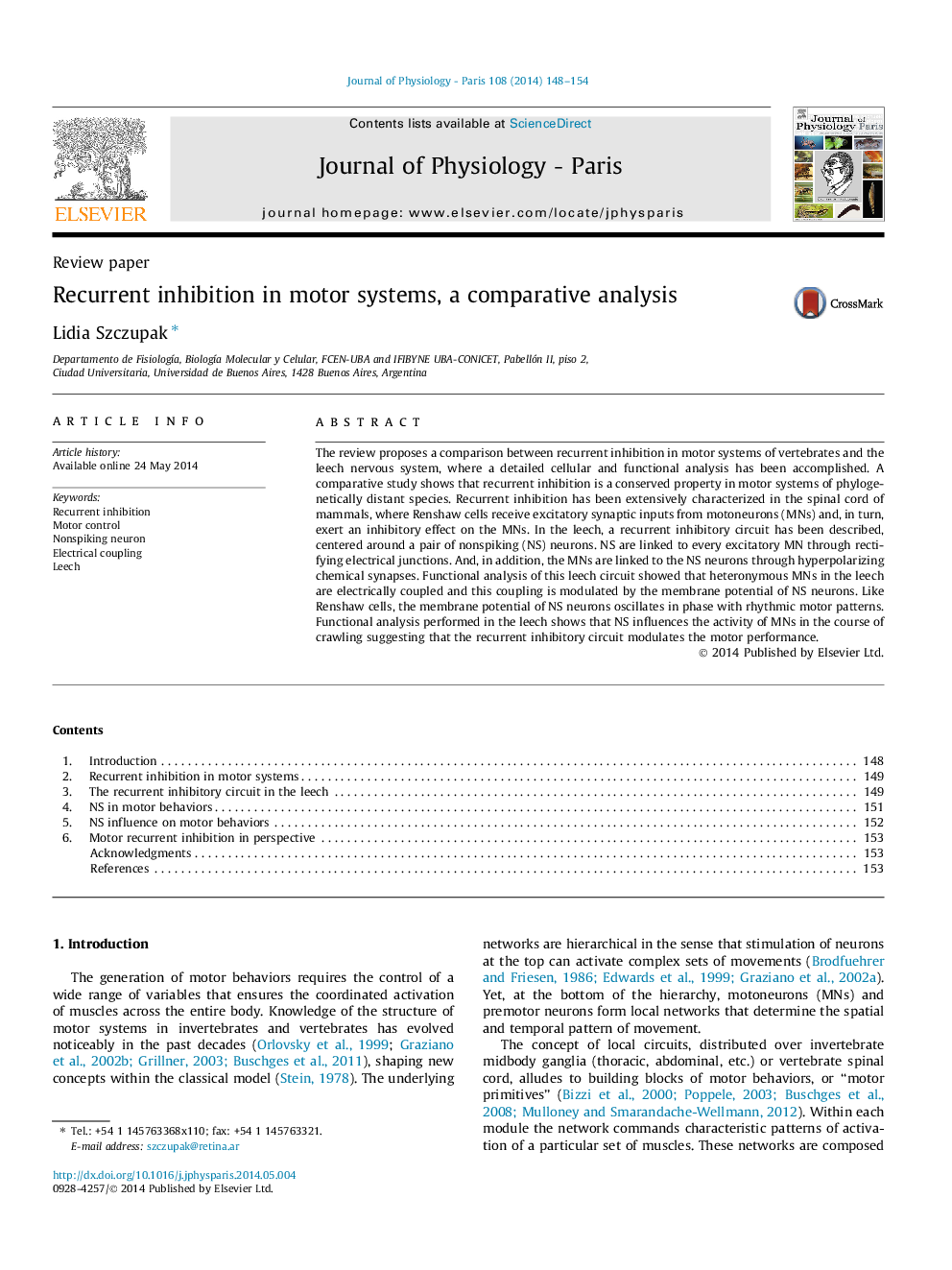| کد مقاله | کد نشریه | سال انتشار | مقاله انگلیسی | نسخه تمام متن |
|---|---|---|---|---|
| 2842248 | 1571024 | 2014 | 7 صفحه PDF | دانلود رایگان |
• Recurrent inhibition relies on motoneuron activity to adjust the motor activity.
• Phylogenetically distant species show similar functional networks.
• Recurrent inhibition in the leech influences rhythmic motor patterns.
The review proposes a comparison between recurrent inhibition in motor systems of vertebrates and the leech nervous system, where a detailed cellular and functional analysis has been accomplished. A comparative study shows that recurrent inhibition is a conserved property in motor systems of phylogenetically distant species. Recurrent inhibition has been extensively characterized in the spinal cord of mammals, where Renshaw cells receive excitatory synaptic inputs from motoneurons (MNs) and, in turn, exert an inhibitory effect on the MNs. In the leech, a recurrent inhibitory circuit has been described, centered around a pair of nonspiking (NS) neurons. NS are linked to every excitatory MN through rectifying electrical junctions. And, in addition, the MNs are linked to the NS neurons through hyperpolarizing chemical synapses. Functional analysis of this leech circuit showed that heteronymous MNs in the leech are electrically coupled and this coupling is modulated by the membrane potential of NS neurons. Like Renshaw cells, the membrane potential of NS neurons oscillates in phase with rhythmic motor patterns. Functional analysis performed in the leech shows that NS influences the activity of MNs in the course of crawling suggesting that the recurrent inhibitory circuit modulates the motor performance.
Journal: Journal of Physiology-Paris - Volume 108, Issues 2–3, April–June 2014, Pages 148–154
